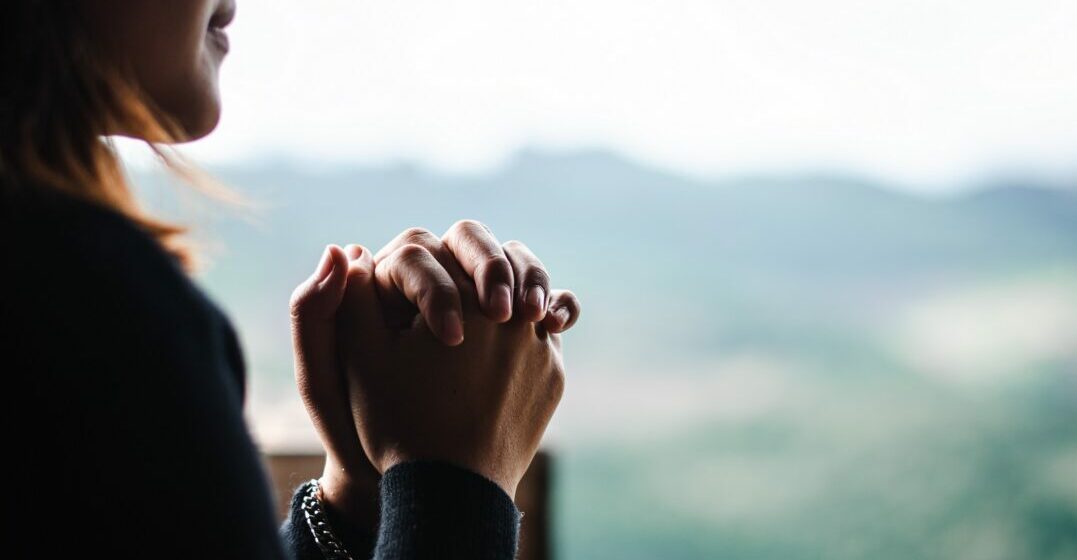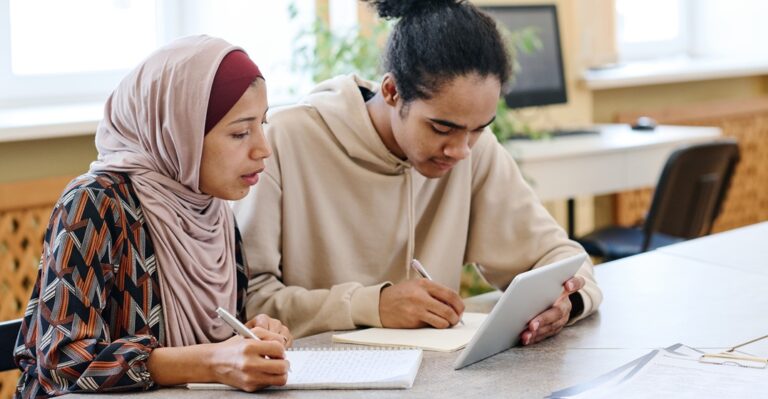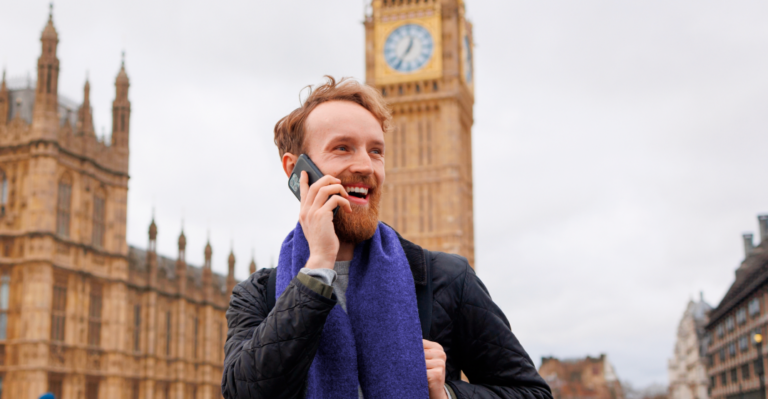Updated on October 16, 2024

How many religions are there in the United States?

The United States is a land of religious freedom.
Despite the fact that the majority of Americans are Christian, it’s actually a secular nation. Because of that, there are people of many faiths all over the country.
So how many religions are there in the United States?
Below, we’ll give you a breakdown of the religions in the USA: the country’s most prevalent faiths, the number of people practicing each one and how each major religion made its way to the United States.

Learn English with Lingoda
How it works

The main religions of the US
There are five main religions in the United States, adding up to about 75% of the population of 329.5 million.
- Christianity: About 230 million people practice some type of Christianity (Protestantism, Catholicism, etc.).
- Judaism: Judaism is practiced by about 7.3 million people in the US.
- Buddhism: About 4.17 million people in the United States identify as Buddhist.
- Islam: In the US, there are around 3.45 million people of the Islamic faith.
- Hinduism: Hinduism is practiced by about 2.5 million people in America.
A history of religion in America
Every religion has a complex history. We’ll highlight some turning points in the major religions’ growth in America.
1. Christianity
Here are a few notable details about Christianity in America:
In the late 16th century, Catholicism was introduced to Florida and New Mexico by Franciscan friars. In the mid-18th century, it was brought to California. The Catholic missionaries’ plan was to convert the country’s Native Americans.
After converting the Native Americans, few European settlers remained stateside. As a result, the Indigenous peoples were free to incorporate their native cultural practices into their newly adopted religion, making it distinct from the European version that was originally introduced (this is still visible today).
The Protestant religion came to the US via Protestants from England who settled on the East Coast. But they were different from the Catholics: They weren’t trying to convert anyone—they were simply settler societies.
In 1607, the first settlement was created in Jamestown, Virginia. Anglicanism, a branch of Protestantism, became the main religion of the South during colonialism.
Over the next century, other branches of Protestantism like Presbyterianism and Baptism began to pop up. In the 1620s and 1630s, another group, the Puritans, arrived from Northern England and settled in New England.
Interestingly, the US was the first Western country founded mainly by Protestants rather than Catholics.
2. Judaism
Jewish people have a long history of migrating to the United States due to religious and ethnic persecution, among other factors. Here are some pivotal moments:
In 1492, the Spanish monarchy expelled Jewish people from Spain. Many who left the country ended up in Spanish colonies in America, such as Santa Elena, where South Carolina stands today.
In 1654, another group of Jewish people came to Nieuw Amsterdam (New York) from Brazil. The Dutch colony they left behind, Recife, had been conquered by the Portuguese, and they were afraid of being persecuted.
Another major event was the Eastern European migration when Czar Alexander II was killed in 1881. Jewish people were blamed and pogroms (massacres) began in the Russian Empire. Many people—more than 2 million, by some accounts—migrated from Eastern Europe to escape.
In 1924, the US passed laws to halt immigration from many areas, including Eastern Europe, where many Jewish people still lived. However, following World War II, Jewish refugees began to be allowed into the United States. Many survivors of the Holocaust began to marry and establish themselves in the US.
3. Buddhism
The Buddhist religion came to America in the 1840s with Chinese immigrants who settled in the western part of the country. Knowledge of the religion was also spread through the US by westerners who had traveled to Asia and brought back Buddhist texts.
In 1893, the World Parliament of Religions came to Chicago, demonstrating “Eastern” religions to an American audience. Two featured speakers, Japanese Zen master Shaku Soen and Sri Lankan Buddhist teacher Anagarika Dharmapala would go on to travel around the US giving talks on Buddhism.
Buddhism began to grow roots in the US soon afterward, starting with the establishment of the Buddhist Churches of America (BCA) in 1899. By the mid-20th century, Buddhist teachers began moving to the US, Canada and Europe to establish Buddhist centers.
Buddhism was further popularized in the 1960s and 1970s by famous American writers like Jack Kerouac and Allen Ginsberg. Many young people were inspired to visit Asia to learn meditation from Buddhist gurus; some returned to the US to establish meditation centers of their own.
4. Islam
Many people think that Islam is fairly new to the United States. But in reality, hundreds or even thousands of Muslims were in the US as early as 1776, brought over as slaves from Muslim regions of Africa.
Islam was accepted early on by Thomas Jefferson, a founding father and the third President of the United States. He even had a copy of the Quran and spoke out in favor of religious rights in Virginia for the “Mahamdan” (a term for people who follow Islam).
Despite this acceptance, Muslims ended up having to adapt to life in America and abandon their religious faith, according to historian Kambiz GhaneaBassiri in his book A History of Islam in America. Almost everyone had converted to Christianity by the end of the 19th century.
But then, in the late 19th and early 20th centuries, many Muslims started to arrive in the US from Eastern Europe, the Middle East and Asia. This influx of tens of thousands was partly due to the Industrial Revolution.
Soon, Muslim communities began to develop small community organizations around the US. Many African Americans began to turn to Islam, seeing it as a lost part of their heritage.
In 1924, US Congress passed law to restricting immigration from Asian and Muslim countries. But the religion’s influence grew in the US, thanks to the Muslims who had already immigrated there and the African Americans who had converted.
5. Hinduism
As we discussed above, the 1893 World Parliament of Religions in Chicago introduced “Eastern” religions to Americans. In addition to Buddhism, it was many people’s first real exposure to Hinduism.
Shortly after, at the beginning of the 1900s, Hindu missionaries and Indian immigrants began to come to the United States and settle along the West Coast. Most of these newcomers were men; they worked in agriculture and lumber and on the railroad. There was no opportunity for people to start families so the community could grow; therefore, the religion didn’t have a large impact on American society.
During this time, however, Indian gurus regularly came to the US. People were interested in their messages, which were largely Hindu-based. This really came to a climax in the 1960s when yoga and meditation were popularized throughout the country by gurus such as Mahesh Yogi (meditation teacher of The Beatles).
In 1965, following several decades of restrictions on Indian immigration, the Immigration and Nationality Act was passed, allowing non-European immigrants to come to the US once again. At this time, the majority of Indians practiced Hinduism, so its presence grew in America. By 1990, there were more than 800,000 Hindus in the US; by the beginning of the 21st century, there were nearly 1.7 million.
Discover the religions of the United States
The details we covered here are only scratching the surface. With a population of nearly 330 million, the US features a vibrant patchwork of religions with deep roots and compelling histories that influence American culture. There’s so much more to discover!

Learn English with Lingoda
How it works














